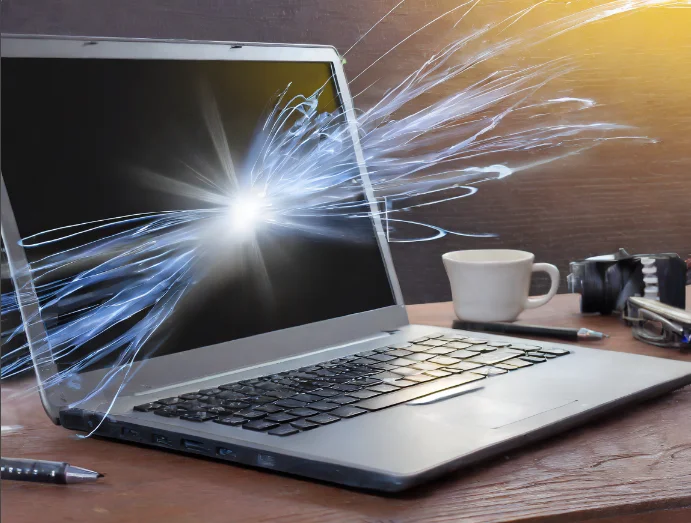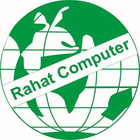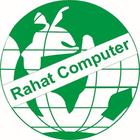How to Make Your Laptop Faster?

If you are frustrated by the slow performance of your laptop, you might be wondering how to make your laptop faster. There are many factors that can affect the speed of your laptop, such as the hardware, the software, and the settings. In this article, we will show you some simple and effective ways to improve the speed of your laptop without spending any money.
How to Make Your Laptop Faster in Oman?
There are many ways to make your laptop faster in Oman. Learn how to make your laptop faster with simple and effective tips. Boost your laptop’s speed, performance, and battery life today. So Speed Up Your Laptop with These Proven Methods:
Upgrade your hardware
Upgrading your hardware is one of the most effective ways to speed up your laptop, but it can also be the most challenging and costly. Depending on your laptop model, you may be able to upgrade some or all of the following components:
RAM:
RAM stands for random access memory, and it is where your laptop temporarily stores data for fast access. Having more RAM can improve your laptop’s performance, especially when running multiple programs or tasks at the same time. To upgrade your RAM, you need to find out the type, speed, and capacity of the RAM modules that are compatible with your laptop, and how many slots are available for adding or replacing them.
Storage drive:
Your storage drive is where your laptop permanently stores your files, programs, and operating system. Upgrading your storage drive can increase your laptop’s storage capacity and speed. There are two main types of storage drives: hard disk drives (HDDs) and solid state drives (SSDs).
HDDs use spinning platters and a moving head to read and write data, while SSDs use flash memory chips and no moving parts. SSDs are faster, quieter, and more reliable than HDDs, but they are also more expensive and have a limited lifespan. To upgrade your storage drive, you need to find out the size, interface, and form factor of the drive that is compatible with your laptop, and how to access it.
Battery:
Your battery is what powers your laptop when it is not plugged in. Over time, your battery can lose its ability to hold a charge, resulting in shorter battery life and reduced performance. Upgrading your battery can restore your laptop’s battery life and performance. To upgrade your battery, you need to find out the model number and capacity of the battery that is compatible with your laptop, and how to remove it. You can use the [Battery Finder] to find out this information. Then, you need to open your laptop’s bottom panel, locate the battery, and replace it with the new one.
Related: Best Hardware Troubleshooting in Oman
Close unnecessary system tray programs
One of the easiest ways to make your laptop faster is to close the programs that run in the background and use up your laptop’s resources. These programs are usually visible in the system tray, which is the area near the clock on the taskbar. To close these programs, click on the arrow icon on the system tray and right-click on the program you want to close. Then, select Exit, Quit, or Close from the menu. This will free up some memory and CPU power for your laptop.
Stop programs running on startup
Another way to make your laptop faster is to stop the programs that automatically run when you boot up your laptop. These programs can slow down the startup process and consume your laptop’s resources. To stop these programs, you can use the Task Manager in Windows 11, 10, 8, or 7. To open the Task Manager, press Ctrl+Shift+Esc on your keyboard. Then, click on the Startup tab and disable the programs that you don’t need to run on startup. You can also use a third-party tool like [CCleaner] to manage your startup programs.
Update Windows, drivers, and applications
Keeping your Windows, drivers, and applications updated is another way to make your laptop faster. Updates can fix bugs, improve security, and optimize performance. To check for Windows updates, go to Settings > Update & Security > Windows Update and click on Check for updates. To update your drivers, you can use the Device Manager or a third-party tool like [Driver Booster]. To update your applications, you can use the built-in update feature or a third-party tool like [Patch My PC].
Related: Best Software Troubleshooting in Oman
Delete unneeded files
Over time, your laptop can accumulate a lot of unnecessary files, such as temporary files, cache files, duplicate files, and old downloads. These files can take up valuable disk space and slow down your laptop. To delete these files, you can use the Disk Cleanup tool in Windows. To open the Disk Cleanup tool, go to Start > Windows System > Disk Cleanup. Then, select the drive you want to clean and click on OK. You can also use a third-party tool like [Clean Master] to delete unneeded files.
Identify resource-hungry applications
Sometimes, the reason why your laptop is slow is because of a specific application that is using too much of your laptop’s resources. To identify these applications, you can use the Task Manager in Windows. To open the Task Manager, press Ctrl+Shift+Esc on your keyboard. Then, click on the Processes tab and sort the applications by CPU, Memory, Disk, or Network usage. You can then close the applications that are using too much of your laptop’s resources or adjust their settings to reduce their impact.
Adjust your power options
Another way to make your laptop faster is to adjust your power options. Your power options determine how your laptop balances performance and battery life. To access your power options, go to Settings > System > Power & Sleep > Additional power settings. Then, select the power plan that suits your needs. For example, you can choose the High performance plan to maximize your laptop’s performance or the Power saver plan to extend your laptop’s battery life. You can also customize your own power plan by clicking on Create a power plan.
Uninstall programs you don’t use
One of the most effective ways to make your laptop faster is to uninstall the programs that you don’t use or need. These programs can take up disk space, run in the background, and slow down your laptop. To uninstall these programs, go to Settings > Apps > Apps & features. Then, select the program you want to uninstall and click on Uninstall. You can also use a third-party tool like [Revo Uninstaller] to uninstall programs and remove their leftover files and registry entries.
Turn Windows features on and off
Another way to make your laptop faster is to turn off the Windows features that you don’t use or need. These features can consume your laptop’s resources and affect its performance. To turn Windows features on and off, go to Control Panel > Programs > Turn Windows features on or off. Then, uncheck the features that you want to turn off and click on OK. For example, you can turn off the Internet Explorer 11, Windows Media Player, or Windows Search features if you don’t use them.
Defragment your hard drive
If your laptop has a hard disk drive (HDD), you can make it faster by defragmenting it. Defragmenting your hard drive is the process of rearranging the files on your disk so that they are stored in contiguous blocks. This can improve the speed and efficiency of your disk and reduce the wear and tear on it. To defragment your hard drive, go to Start > Windows System > Defragment and Optimize Drives. Then, select the drive you want to defragment and click on Optimize. You can also use a third-party tool like [Defraggler] to defragment your hard drive.
Adjust graphics and animations settings
Another way to make your laptop faster is to adjust the graphics and animations settings. These settings determine how your laptop displays visual effects, such as shadows, transparency, and animations. To adjust these settings, go to Control Panel > System and Security > System > Advanced system settings. Then, click on the Advanced tab and click on Settings under Performance. You can then choose to adjust the settings for best appearance, best performance, or custom. For example, you can uncheck the settings for Animate windows when minimizing and maximizing, Fade or slide menus into view, or Show shadows under windows to improve your laptop’s performance.
Check for malware
One of the most common causes of a slow laptop is malware. Malware is any malicious software that can harm your laptop or compromise your privacy. Malware can infect your laptop through various ways, such as downloading files from untrusted sources, clicking on suspicious links, or opening email attachments. To check for malware, you can use the Windows Security app in Windows. To open the Windows Security app, go to Settings > Update & Security > Windows Security. Then, click on Virus & threat protection and run a quick or full scan. You can also use a third-party tool like [Malwarebytes] to check for malware.
Disable Cortana
Another way to make your laptop faster is to disable Cortana. Cortana is the virtual assistant that can help you with various tasks, such as searching the web, setting reminders, or sending emails. However, Cortana can also use up your laptop’s resources and affect its performance. To disable Cortana, go to Settings > Cortana > Talk to Cortana. Then, turn off the settings for Hey Cortana, Keyboard shortcut, and Lock screen. You can also turn off the settings for Permissions and History to prevent Cortana from accessing your data.
Restart your browser
Sometimes, the reason why your laptop is slow is because of your browser. Your browser can consume a lot of your laptop’s resources, especially if you have many tabs or extensions open. To make your laptop faster, you can restart your browser and close the tabs or extensions that you don’t need. You can also clear your browser’s cache and cookies to free up some disk space and improve your browser’s performance. To clear your browser’s cache and cookies, go to your browser’s settings and look for the option to clear browsing data.
Close your browser tabs
Another way to make your laptop faster is to close your browser tabs. Each browser tab uses some of your laptop’s memory and CPU power, and having too many tabs open can slow down your laptop. To close your browser tabs, you can click on the X icon on the tab or use the keyboard shortcut Ctrl+W. You can also use a browser extension like [OneTab] to save your tabs and close them all at once.
Try a different antivirus program
Another way to make your laptop faster is to try a different antivirus program. Your antivirus program can protect your laptop from viruses and malware, but it can also use up your laptop’s resources and affect its performance. To make your laptop faster, you can try a different antivirus program that is lighter and more efficient. For example, you can try [Avast], [Bitdefender], or [Kaspersky] as alternatives to your current antivirus program.
Try not to multitask as much
Another way to make your laptop faster is to try not to multitask as much. Multitasking is the act of doing multiple tasks at the same time, such as browsing the web, listening to music, and working on a document. However, multitasking can also strain your laptop’s resources and affect its performance. To make your laptop faster, you can try to focus on one task at a time and close the programs that you don’t need. This will help your laptop run more smoothly and efficiently.
Conclusion
In conclusion, you don’t have to endure a slow laptop when various solutions can help you make your laptop faster. Cleaning up your system, upgrading hardware, managing background processes, optimizing power settings, keeping your laptop cool, and making adjustments for web browsing can all contribute to a speedier, more responsive computing experience. By implementing these tips and techniques, you can enjoy better performance without the need for a new laptop, saving you time, money, and frustration. So, don’t wait—get started on making your laptop faster today!



